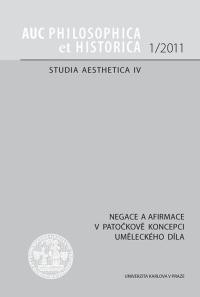Two Types of Reflection and Art in Jan Patočka’s Thought
Dva typy reflexe a umění u Jana Patočky
Author(s): Felix BoreckýSubject(s): Philosophy
Published by: Univerzita Karlova v Praze, Nakladatelství Karolinum
Summary/Abstract: One of the chief points in Patočka’s late critique of Husserl is the concept of reflection. Against the contemplative reflection of consciousness, Patočka (following Heidegger) sets up reflection as a turning point in existence that comes from a practical mode of finite Dasein. This seems to Patočka to be more faithful to phenomenological teachings – namely, to conceive things as they appear and within the bounds of their appearance. According to Patočka, this kind of existential reflection (the ‘third movement’) can also induce art. But Patočka does not entirely abandon the contemplative kind of reflection. In his writings on the reception of the work of art (‘The Writer and His Object’, ‘The Lesson on the Past Character of Art’), he is aware of the fictive character of aesthetic objects, which represents a necessary condition for the interaction between the world of the work of art and the world of the viewer.
Journal: Acta Universitatis Carolinae Philosophica et Historica
- Issue Year: IV/2011
- Issue No: 1
- Page Range: 31-41
- Page Count: 11
- Language: Czech

